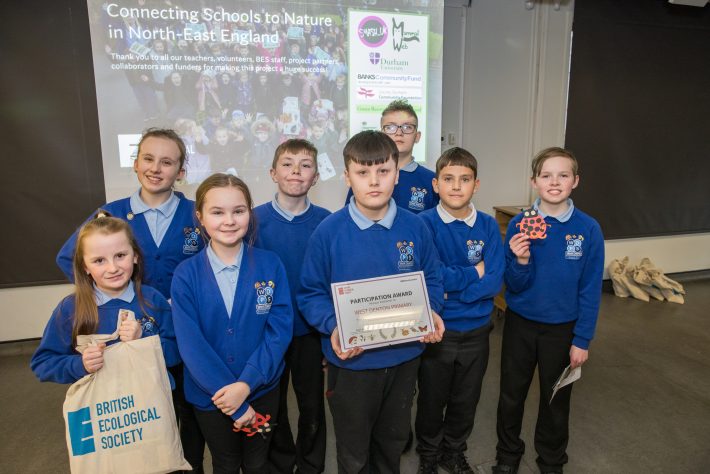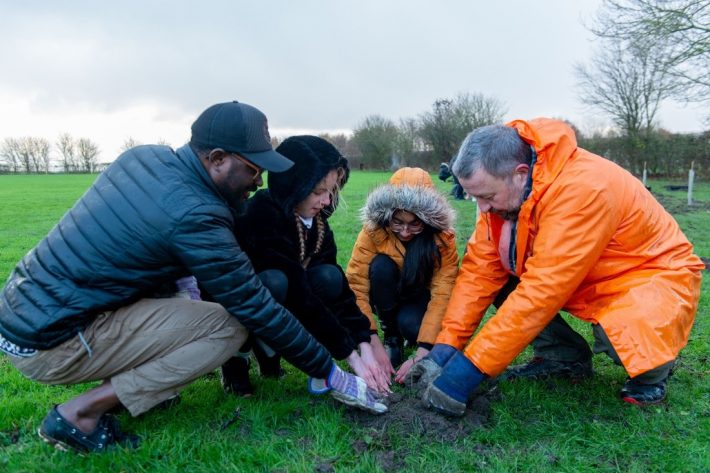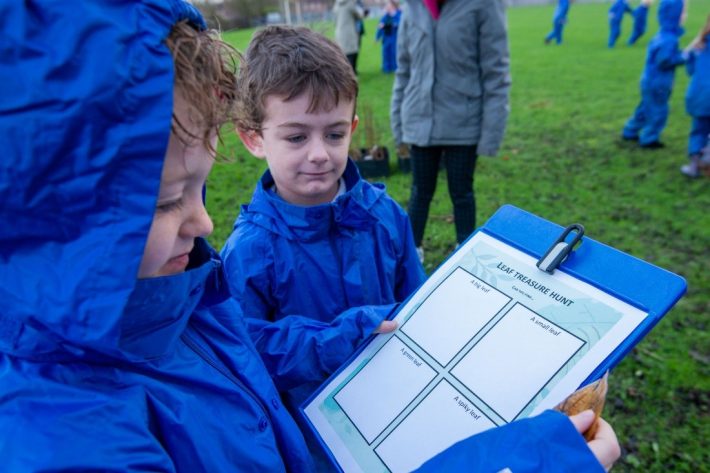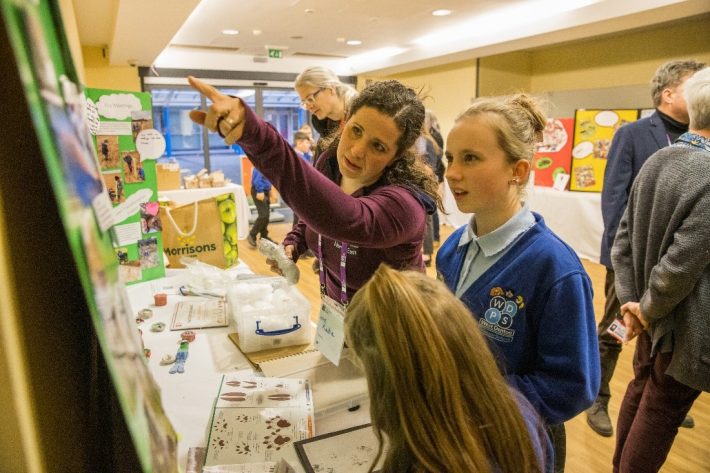Connecting schools to nature: lessons learnt
The British Ecological Society recently completed a large education project: Connecting Schools to Nature in North-East England. Now the project has drawn to a close, join us as we reflect on some of the key learnings from the project which we will be taking forward into future education projects.

About the project
The project engaged 72 schools in a range of nature-based activities including transforming school grounds into green spaces and taking part in local and national citizen science schemes. The project had positive benefits for the pupils and teachers who took part, including increasing connection to nature and knowledge of UK wildlife as well as improving well-being.
Accounting for differences in biodiversity on school grounds
In the UK, school grounds differ greatly in the size and quality of habitats available for wildlife. Whilst some schools in our project had vast open green spaces with several different habitats, other schools had only small, concreted areas enclosed by buildings or fencing.
The aim of our project was to help pupils and teachers connect with the nature on their doorstep, but if the nature on their doorstep is limited, does this mean that some schools miss out? In our project, differences in school ground habitats did lead to differences in species encountered when schools participated in various activities. To keep the more species-poor schools engaged in the project, we re-shaped our key messaging, choosing to focus not on the lack of species present but instead on how we could use this knowledge to make changes for the future.
This is why in our final module of the project we focused heavily on green transformations of school grounds. If a school was lacking in mammals, we encouraged schools to put holes in fences to attract hedgehogs and other mammals to pass through. Bug hunt didn’t reveal much? Schools applied for funding to make planters for wildflowers. We allowed each school to plan and apply for funding for their own individual green transformations. This ensured that the changes made were suitable for their school – to attract wildlife that might currently be missing and to fit spaces that are available.
We loved seeing the ideas that schools produced, and it was a privilege to be able to work with schools to make those changes happen! With the equipment provided by the project (e.g., camera traps and insect surveying equipment) schools can now track whether the changes to their grounds have helped encourage more biodiversity.

Barriers to accessing outdoors
Our project provided over £250 worth of ecological equipment to each participating school. This equipment enabled schools to fully engage with all aspects of the project by removing the financial barrier of having equipment to carry out activities such as surveying. Feedback from teachers placed high value on receiving this equipment, for example one teacher wrote: “The best part of the project has been accessing equipment as this would not be something that the school would have the budget for”.
However, as all schools are different, we were aware that some barriers remained for accessing outdoor spaces. We worked with teachers on an individual basis to see how we could support teachers overcome some of these barriers. We found that particularly for schools in areas of high socio-economic deprivation, even if schools had amazing green outdoor spaces, children were not always equipped to go into those spaces.
In some schools, children did not have suitable footwear or outdoor clothing and therefore, spending time outdoors could be quite miserable (no one likes to be cold, wet and muddy for the rest of the school day!) or even dangerous. With this in mind, in the final module of the project, alongside funding for green transformations we also offered schools the opportunity to apply for funding for outdoor clothing so that they could maximise use of their outdoor spaces.

Inspiring teachers to engage with ecology
The benefits of connecting children to nature are vast and have been well studied. Hence, the main aim of our project was to reach thousands of school pupils and help them get more connected to nature. However, when working on a school-based project we believe it’s equally important to engage and inspire teachers as, ultimately, it is the teachers who can create changes in their school which can lead to long-term impact on pupils.
From the outset of our project we engaged with teachers, co-creating aspects of the project such as our lesson plans and our Encounters platform. We also offered teacher training opportunities within every module which helped to equip teachers with the confidence and skills needed to engage in the ecology activities. However, we recognise that our project took place during a difficult time for schools, emerging from a global pandemic and with more pressures on them than perhaps ever before.
Whilst feedback from the project was very positive (90% of teachers rating the overall project as good or very good), some teachers did feedback to us that they would like to connect with other teachers in the project to share ideas and resources. To help with this, in the final iteration of the Encounters platform, we designed a new ‘Community’ page where teachers could share what they’ve been up to and ideas for their own nature-based projects. It’s been amazing to see schools engage with this and we’re looking forward to seeing it grow in the future as more schools sign up to Encounters.

What’s next?
With the lessons learned from our Connecting Schools to Nature Project the British Ecological Society are developing new education projects to help support teachers and schools engage with ecology. We are building a new teacher’s network for primary, secondary and sixth form/college teachers which will help support teachers wishing to engage with ecology. We’re seeking input from teachers on what they would like from the network, and hope that it will provide a space for like-minded teachers to connect, offer resources and training and highlight opportunities including new projects, schemes and funding.
Be the first to hear about the new network by signing up to our mailing list here.
sign up to the Teacher’s network
Like what we stand for?
Support our mission and help develop the next generation of ecologists by donating to the British Ecological Society.